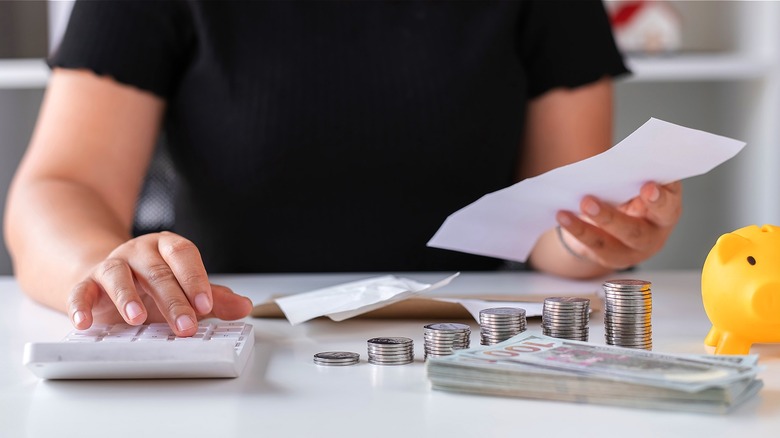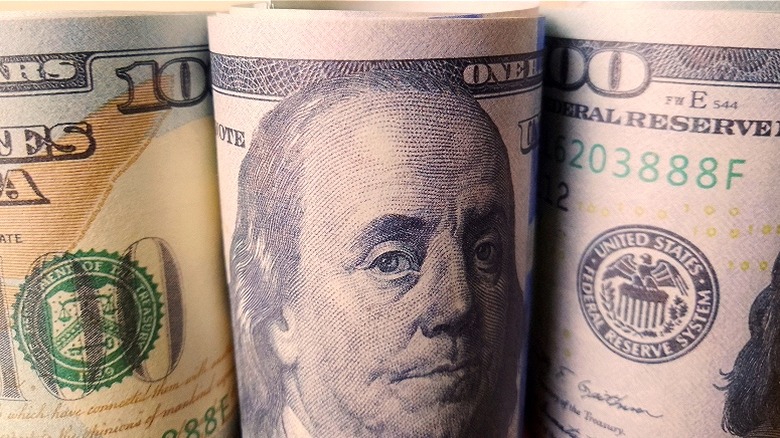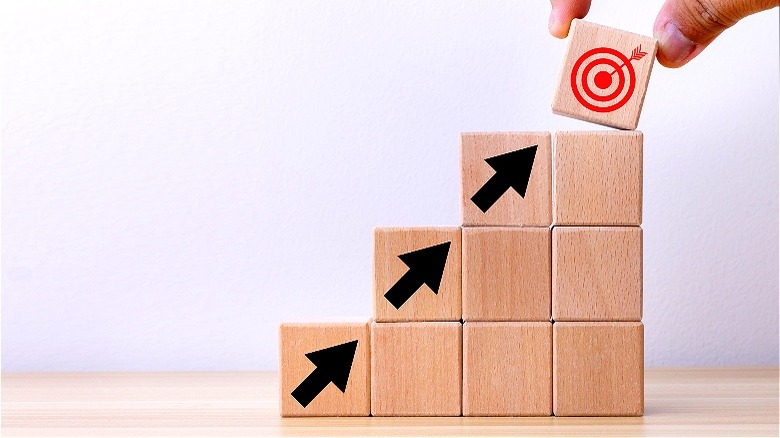The Underrated Financial Fitness Milestone That Will Protect You On A Rainy Day
It can be difficult to stay motivated when it comes to saving money. While spending it might give you a tangible item or trip to measure the money by, saving can feel decidedly less exciting. To add to this, most Americans are struggling with the increased pressure of inflationary prices (hello, 25% increase in groceries), not to mention spikes in housing prices (especially for renters who might be unwittingly getting gouged thanks to RealPages' pricing algorithms).
While we all recognize the importance of saving money, the reality of staying dedicated to a long- term savings goal (especially in the face of pressing immediate expenses) can be harder than it seems on the surface. This is why it should come as a surprise to no one that, according to Forbes Advisor, 28% of Americans have less than $1,000 in their savings (in 2024). With that in mind, setting and reaching a specific savings milestone can be a great way to not only give you something to work toward but also help to ensure your financial health.
While you might have heard of emergency funds before, creating one for yourself can be vital to your financial planning; knowing how much to aim for can be especially important. On that note, there's a specific emergency fund milestone you can aim for that would ensure you're financially better off than most Americans: having at least $2,000.
Why you should aim to save $2,000
You might be asking just how much you should keep in an emergency fund, and why the answer should be more than $2,000. This underrated financial milestone comes down to current data on what most Americans have. According to a 2024 survey from The Motley Fool, just 47% of Americans reported having an emergency fund. Among the people who did report having this kind of fund, the median amount in their accounts was $2,000. Similarly, the think tank TIAA Institute found that one in eight Americans reported being unable to financially handle a $2,000 emergency should it arise. This means that if you aim to have at least $2,000 (or more) saved away, you can say that you've reached a milestone sooner than a lot of people across the country.
However, this doesn't mean you should necessarily stop your savings progress once you achieve $2,000. In fact, the main benchmark for how much money you should personally aim to keep in your emergency fund actually depends on your individual monthly expenses. The best rule of thumb is to keep whatever amount equals roughly three to six months' worth of your absolutely essential bills and expenses in your emergency fund. By ensuring you can cover your necessities for at least three months, you're better protected from not only emergency situations like your car breaking down or a necessary home repair but, it also means you could still provide for your family in the event of a sudden job loss.
Reaching your savings goal
There are many ways to reach your savings goals, plus strategies that can make the process easier. Finding the right kind of budgeting (that fits your lifestyle), for starters, can be a great way to help you stay on track financially. Whether you implement a budgetary guideline like the 50/30/20 budget rule or you simply add a budget app to your phone to keep track of expenses, the most important first step is making sure you know exactly how much you spend in a month. From streaming services to auto-renewals to online purchases, it can be easy to underestimate how much you spend every month on everyday things. Once you have a better understanding of your monthly expenses, you can assess what you might want to cut or scale back on. This can help make room in your budget for savings.
Another important element to becoming financially fit, however, is where you choose to save your money. Keeping your savings in a traditional big-bank savings account can actually hurt your bottom line due to the typically low annual percentage yield (APY) offered through these kinds of accounts. Prioritizing a high-yield savings account instead can be a much better way to help your money grow while it sits. Plus, you should aim to find an account with a higher APY (specifically, more than the current rate of inflation) so that you can ensure you keep your purchasing power intact on the money you save. Outpacing inflation can help you reach your savings goals, like $2,000, sooner.


